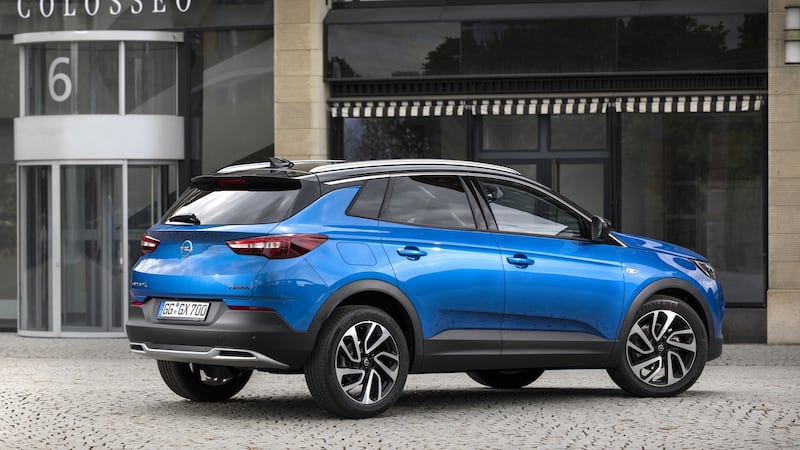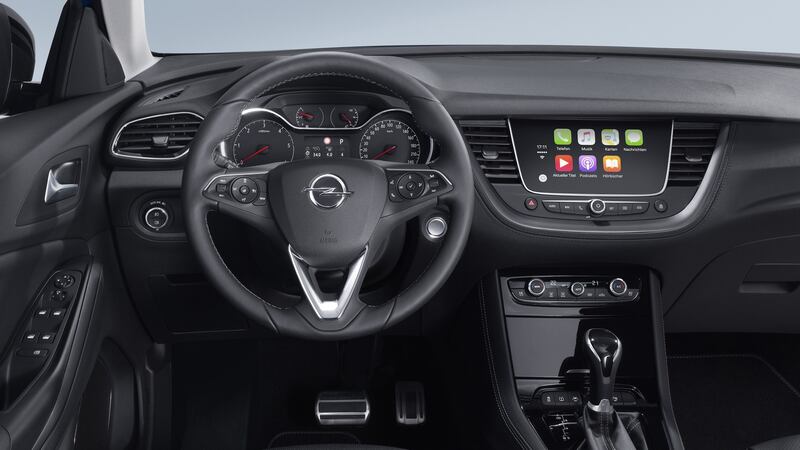Bonjour was the first word spoken to the press when Opel revealed its new Grandland X at the Frankfurt motor show in Germany. It was followed by several statements in the lingua franca, underlining the change of ownership of the German brand from US giant General Motors to the PSA Group, owners of the Peugeot, Citroen and DS brands.
Whatever the intent of the PSA management team or the speechwriters, it seemed an oddly provocative way to promote some entente cordiale among its new employees.
The fruits of the latest Franco-German alliance are already coming to market. Russelsheim’s new family-sized SUV offering is built using the award-winning Peugeot 3008 as its base.


Basing your latest foray into such an important sales segment on the current European car of the year would seem eminently sensible. But it does raise a question about Opel in the future: does this herald the end of Opel’s autonomy and will it mean the brand ultimately becomes a marketing exercise, rebadging Peugeot and Citroen engineering efforts?
German DNA?
We asked Uwe Winter, Opel's chief engineer on the Grandland X project, were his hands tied by the firm's new master and what, if anything, did he do to the machine to give a feeling of Opel-ness?
According to Winter, generally Opels are firmer and sportier to drive than traditionally softly sprung French equivalents. To this end Opel has stiffened the suspension of Grandland X using its own dampers and the steering has been tweaked to be more precise and sporty.
Winter was obsessed with reducing the car’s weight and at less than 1.4 tonnes, the Grandland X is refreshingly light for such a big car. This weight-watching has paid off and allowed Winter and his team build a good performer with relatively small and efficient engines.
The Grandland X is the second Opel built on a PSA platform, following on from the smaller crossover, the Crossland X, which was based on the Peugeot 2008, Peugeot Ireland’s best-selling car.
For all its french links, the Grandland X manages to have it own look. There is a nice upright grille that features the blitz badge and some smaller wings. There is also a new twist on Opel’s signature blade indent on the flanks. The optional contrasting roof that it seems every manufacturer is doing these days helps reduce the five seat car’s bulk. Is the Grandland X a pin up? No, but it is no better- or worse-looking in its class. Opel is pitching the car at a youthful fashion-led buyer.
Cabin fever
In reality, its older buyers and families with young kids will be drawn to the front wheel drive crossover. The Grandland X has a good boot at 514 litres, expandable to 1,652 litres with the rear seats down. Should you get a puncture there is just an inflation kit but you can get a proper spare wheel from your dealer for €150.
Inside the cabin Opel has delivered a conventional experience with a familiar Opel dash layout that conservative buyers will instantly accept. All the technology is there, it’s just not that stylishly packaged. The Peugeot 3008 on the other hand has a really interesting and comparatively exciting dash and interior. So, it looks like Opel has kept its identity despite all the PSA bits and pieces under the skin.
Opel’s third X model will be offered with just two engines, a PSA 1.2 litre turbocharged petrol with 130hp/230nm and an Opel turbocharged 120hp/300nm 1.6 litre diesel. Both are available with six speed manual or six speed automatic gearboxes. These units will be joined by a more powerful 180hp diesel with an eight speed auto next Spring. A more affordable sub 120bhp diesel version was suggested for later in 2018.
The Grandland X comes in three trim grades SC, SRi and Elite. SC comes with a good level of standard specification on 17 inch alloys but only gets Bluetooth phone connectivity, the higher grades get Apple CarPlay and Android/Auto.
Other options of note include a contrast roof colour, heated and cooled front seats, heated rear seats, adaptive headlights and a large sunroof. Some options are only available on the top trim Elite such as induction phone charging and a Denon premium sound system with eight speakers and subwoofer.
Two engines
Opel’s all road pack is well worth considering as its IntelliGrip system delivers pretend all-wheel-drive ability from just the driven front wheels. You can select from five modes via a rotary dial: normal, snow, mud, sand and ESP off. The system then maximises traction by adapting engine torque and braking to deliver optimum grip with the driving surface.
The 1.6-litre diesel was a gem and delivered effortless cruising ability on the autobahn where I cruised at up to 180km/h with power to spare. On country roads the car’s pulling power made for uneventful driving around the outskirts of Frankfurt. I particularly like the automatic version as it made life very easy. Despite the car’s low weight, it felt pleasantly firm on the road and solid. The 1.2-litre petrol has an eager three cylinder working away under the bonnet. This engine felt a lot livelier and more instant in response. The unit produces 130hp and was perfectly fine on most roads. At higher speed you were aware of the noise of the three pots firing away. The new Opel actually delivered on Uwe Winter’s promise.
The Grandland X may lack 3008’s design flare but it still manages to have an identity of its own. Yes the Grandland X benefits greatly from the host of new PSA technologies found in the 3008 but it gets a few of its own with Opel OnStar and 4G WiFi hotspot as standard. Prices start from €27,995 for the petrol and from €28,995 for the manual diesel.
The sector is dominated by the Hyundai Tucson (from €26,245) and the Nissan Qashqai (from €25,620) but seeing as the 3008 (from €25,995) is car of the year, the new Opel has to be taken seriously too.
Opel Grandland X arrives in dealerships in late October.
Lowdown: Opel Grandland X 1.2 Price: from €27,995 Engine: 1.2 Direct Injection Turbo Power: 130hp Torque: 230nm 0-100km/h: 11.1 seconds Top speed: 188km/h Claimed fuel economy: 4.9l/100km (57.6mpg) Emissions: 124g/CO2 Motor tax: €270 (band B1) Verdict: A good all rounder Our rating: 3 stars










